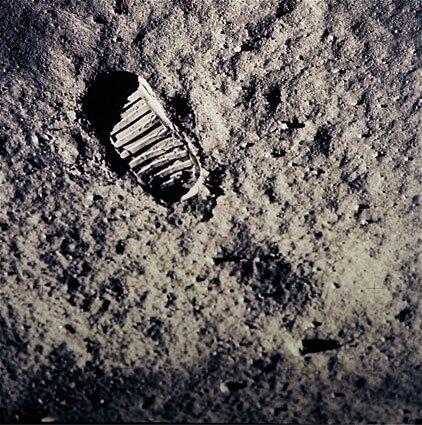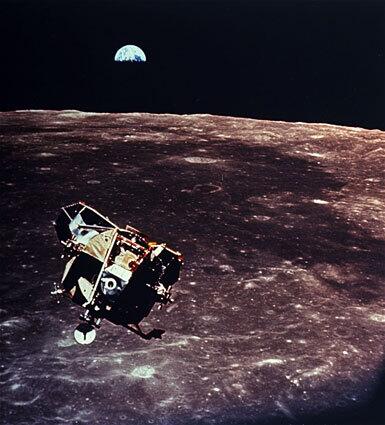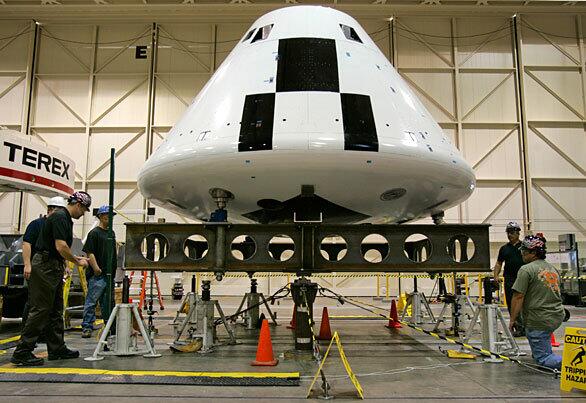PHOTOS: Apollo 11

Neil Armstrong trains nine days before Apollo 11’s launch. During the mission, Armstrong used a ladder to descend from the lunar module to the moon’s surface. Armstrong has a bachelor’s degree in aeronautical engineering from Purdue University and a master’s degree in aerospace engineering from USC. (NASA/Associated Press)

The Saturn V rocket carrying the Apollo 11 crew lifts off from Kennedy Space Center in Florida. Rocket scientist Wernher von Braun was the chief architect of the Saturn V launch vehicle, which carried the mission’s command module Columbia and lunar module Eagle. (NASA/AFP)

A footprint is left on the lunar surface after Neil Armstrong and Buzz Aldrin became the first men to walk on the moon. The mission fulfilled President Kennedy’s 1961 mandate to land a man on the moon by the end of the 1960s. (NASA/AP)

With the Earth rising above the moon’s horizon, the lunar module moves toward a rendezvous with the command module after blasting off from the surface. Michael Collins, who piloted the command module, was born in Italy and is a graduate of the U.S. Military Academy at West Point, N.Y. (NASA/Associated Press)
Advertisement

Neil Armstrong, left, Buzz Aldrin and Michael Collins attend a White House event on July 20, 1994, marking the 25th anniversary of the Apollo 11 mission. (Greg Gibson/Associated Press)

A test model of the Orion Crew Exploration Vehicle, NASA’s next-generation space capsule, is rolled out at Edwards Air Force Base in the Mojave Desert in October 2008. The Orion vehicle looks strikingly similar to the Apollo space capsule, but it is larger and will carry six astronauts instead of three. NASA is aiming to send Americans to the moon aboard Orion by 2020. (Irfan Khan/Los Angeles Times)



